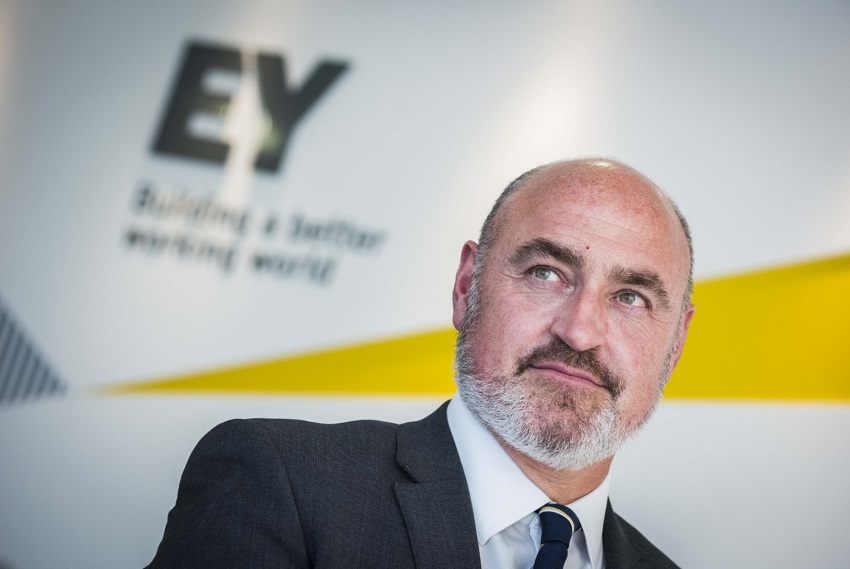EY: Scotland punches ‘above its weight’ to secure decade-long stretch as top UK FDI location outside London

Ally Scott – Managing partner for EY Scotland
Scotland has secured 135 foreign direct investment (FDI) projects in 2024 and cemented its reputation as the top UK FDI location outside London after marking a decade in the position.
Despite a drop of seven projects (-4.9%) on the year before, this is still the second highest annual number of projects recorded, according to the latest EY Scotland Attractiveness Survey.
The UK recorded 853 FDI projects in 2024, a 13% decline from 2023, making it Europe’s second-best performing country for attracting inward investment. France ranked first in Europe in 2024 with 1,025 projects, a decline of 14% year-on-year. Scotland was the sixth best performing region in Europe.
Against a UK and Europe backdrop of a marked decline in project numbers, Scotland’s share of projects has increased year-on-year and now sits at 15.8%, up from 14.4% in 2023, and with a ten-year average of 11.5%.
Glasgow (27 projects) became Scotland’s leading city for FDI for the first time in five years – a position that Edinburgh held between 2020 and 2023 – and the second most popular UK city outside London, after Manchester (44 projects). Scotland’s three major cities are once again in the UK top 10 cities, with Edinburgh having secured 24 projects and Aberdeen 12 projects.
Scotland’s top three FDI sectors were machinery & equipment (19 projects), software & IT (15 projects) with agri-food and utility supply joint third (14 projects). In fact, Scotland was the UK leader in oil and gas FDI (seven projects), as well as inward investment in the utility supply, electronics, and the machinery and equipment sectors. Scotland attracted 11 financial services foreign direct investment (FDI) projects in 2024, representing a decade high, and is the top location outside London with Edinburgh (six projects) joint top city outside of London alongside Manchester.
The U.S. remained the single biggest country of origin for Scotland’s FDI projects, with U.S. projects rising by 37% to 37 projects, accounting for 27.4% of Scotland’s total during the year – above the 23.7% of UK projects originating from the US. Projects from Germany fell by 40% to 12 projects, maintaining its position as the second-biggest source of projects into Scotland, followed by France with eight. Over the decade, Scotland has secured 356 FDI projects from the U.S.
EY Scotland managing partner, Ally Scott, said: “Put simply, Scotland continues to punch above its weight with inward investment.
“While project numbers slipped back slightly in 2024 from their record high the previous year, a much sharper fall in projects into the UK overall saw Scotland’s share increase for the sixth year running. In doing so, Scotland consolidated its decade-long position in second place for UK FDI.
“While FDI is only one part of the Scottish economy, the challenge is ensuring the policy landscape continues to react to changing business and demographic needs. Many priorities of international investors considering Scotland are very similar to those of our homegrown business community – future-proofed infrastructure, an efficient planning system, a skilled workforce, simplified tax structure – improve these levers and you’re activating broader economic growth.
“Far from relaxing after a job well done, it’s time for Scotland to take some confidence from these findings and to double-down and cement its hard-won position.”
Peter Arnold, EY UK chief economist, said: “London remains the leading UK destination for investment while Scotland has now achieved second position for each of the last ten years.
“Tech has been the consistent lead sector for UK FDI over the last twelve years, and London has continued to hoover up the lion’s share of digital projects. But the sector and activity mix outside London remains diverse, which could be an advantage for the UK in the years ahead.
“The prominence of manufacturing in the North West, logistics in the Midlands and R&D activity in the South East, alongside renewable energy opportunities in Scotland and the North East, means the UK has various hubs that could potentially lead Europe in the years ahead.
“Policymakers will need to determine how best to support these regional strengths while also fuelling those sectors that investors see as the key driver for UK investment in future, such as professional services and technology. The upcoming Industrial Strategy should provide opportunities to coordinate a nationwide approach to bolster and protect high-value sectors and activity.”
UK attractiveness set to be less impacted than rivals by global disruption
EY also assessed the effect of US tariff announcements on the UK’s attractiveness as an investment location. This was based on two surveys, formed of interviews with a panel of 400 international investment decision-makers between January and March 2025, as well as a panel of 300 in May 2025. The proportional split of investors from specific countries and sectors remained the same across both samples.
According to the survey conducted in May 2025, more than half (52%) of investors said they planned to invest in the UK over the next year, with 30% of those responders expecting to invest in Scotland. However, for the UK this was lower than the 62% response to the same question in the initial March 2025 survey but Scotland saw an increase from 25% conducted before the announcement of US tariffs.
While the findings revealed that the announcements of tariffs and worldwide trade disruption have affected investor appetite for FDI across various territories, there were signs that the UK’s attractiveness may be marginally less affected than some of its international competitors.
When asked whether US tariffs have impacted their plans over the next year, 43% of respondents to May’s survey answered that the announcements had made them more likely to invest in the UK in the next 12 months, compared to 38% for the EU and 29% for the US. Forty eight percent said they were now less likely to invest in the UK, compared to 50% for the EU and 61% for the US.
The findings also revealed that investors do not believe that current global economic disruption will significantly affect the UK’s attractiveness as an investment location in the coming years. More than half (54%) of respondents to May’s survey said they expect UK attractiveness to increase over the next three years, similar to the proportion (53%) that said the same in March’s survey. A quarter (26%) of respondents expect UK attractiveness to remain the same, while 17% expect it to decrease.
Investors favour support for key industries and infrastructure spending
The March survey also revealed the attributes of the UK that investors find most attractive. When asked which factors most important in motivating them to invest in the UK, the most popular answer was the liquidity of the financial markets and availability of capital in the UK. The second most popular choice was the UK’s legal and regulatory environment, while the strength of the UK’s domestic market came third.
Technology (39%) and professional services (34%) were seen by investors as the leading sectors that could be expected to drive UK growth over the next three years, followed by financial services (22%).
When asked where the UK should concentrate its efforts to maintain its global competitiveness, a third (33%) of investors surveyed in May said the UK government should focus on supporting strategic industries such as cleantech and AI. A quarter (24%) said the UK should invest in major infrastructure projects, while a similar number (23%) said the UK needs to reduce energy prices and increase energy independence. One in five (20%) said the UK should reduce and simplify its tax policies.
Survey respondents said that greatest risks to UK attractiveness over the next three years would be macroeconomic conditions such as slow growth and high interest rates (36%), tariffs and other trade barriers (33%) and geopolitical tension (32%).
When asked which global cities they expect to be London’s biggest rivals for FDI over the next three years, more than half (57%) named New York, while 42% said Paris. Nearly a third (32%) named Dubai, while 30% said Dublin.
EY also asked investors to name the most important factors they considered when deciding whether to invest in locations outside London. The highest number of responses included access to regional grants and incentives (37%), followed by availability and skills of the local workforce (30%), with availability of business partners and suppliers (28%) in third place. One in five (21%) said they considered the strength of local transport infrastructure.








